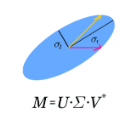The Levin method is a classical technique for evaluating oscillatory integrals that operates by solving a certain ordinary differential equation in order to construct an antiderivative of the integrand. It was long believed that the method suffers from ``low-frequency breakdown,'' meaning that the accuracy of the computed integral deteriorates when the integrand is only slowly oscillating. Recently presented experimental evidence suggests that, when a Chebyshev spectral method is used to discretize the differential equation and the resulting linear system is solved via a truncated singular value decomposition, no such phenomenon is observed. Here, we provide a proof that this is, in fact, the case, and, remarkably, our proof applies even in the presence of saddle points. We also observe that the absence of low-frequency breakdown makes the Levin method suitable for use as the basis of an adaptive integration method. We describe extensive numerical experiments demonstrating that the resulting adaptive Levin method can efficiently and accurately evaluate a large class of oscillatory integrals, including many with saddle points.
翻译:利文法是一种古典的方法,用于评估螺旋体元件,它通过解决某种普通的差别方程式来运作,以构建原体的抗降解性。人们长期以来认为,这种方法存在“低频率分解”的问题,这意味着,当非粒体只是缓慢的振动时,计算成形元件的精确性会恶化。最近提出的实验证据表明,当切比谢夫光谱法被用于分解差异方程式,而由此产生的线性系统则通过支离破碎的单值分解来解决时,没有观察到这种现象。在这里,我们提供了证据,证明事实上,这个案例,而且显然,我们的证据甚至在马鞍点上也适用。我们还注意到,没有低频分解法使利文法适合用作适应性整合方法的基础。我们描述了广泛的数字实验,表明由此产生的适应性Levin法能够有效和准确地评估一大批类骨骼元,包括许多有马鞍点。




